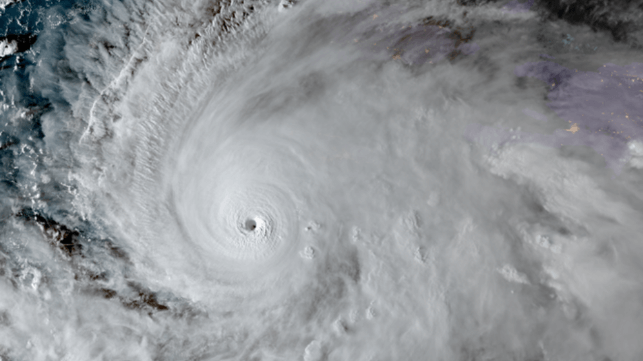U.S. Navy Gets Out of the Way as Hurricane Melissa Turns North

Hurricane Melissa has taken a hard right turn and is now headed straight for Jamaica, packing Category 5 strength. It is on track to be the most powerful storm ever to hit the island, and will likely carry on into southeastern Cuba, not far from the U.S. Navy base at Guantanamo Bay.
The National Hurricane Center predicts "damaging winds and heavy rainfall, causing catastrophic and life-threatening flash flooding and numerous landslides" across Jamaica, continuing through Tuesday. With wind speeds of 150 knots, the storm's destructive power is likely to cause "total structural failure," especially at higher elevations.
The island's prime minister, Andrew Holness, has ordered the evacuation of residents in low-lying areas in Clarendon, St. Catherine, Kingston and St. Andrew, all in harm's way on the southern coast of the island. Up to 50,000 people could be displaced by the storm, officials estimate. The worst impacts could be from heavy rainfall, landslides and flooding: the storm's eye is advancing very slowly, and it will linger over Jamaica while dumping torrents of rain.
The U.S. Navy has been building up forces in the Caribbean as part of a pressure campaign on Venezuela, and has had to reposition assets due to the danger posed by the storm. Destroyer USS Gravely has pulled into port in Port-of-Spain, Trinidad, where she will be able to wait out rough conditions. Seven other U.S. Navy vessels have changed their itineraries due to heavy weather in the area, officials told the New York Times.
In addition, the Navy has evacuated about 1,000 personnel - including contractors, dependents and nonessential servicemembers - from the naval station at Guantanamo Bay. The base is to the east of the storm's projected trackline and has a lower - but nonzero - chance of experiencing storm-force winds. Evacuees were flown to Naval Air Station Pensacola for safety, and will be returned to Guantanamo Bay when the storm has passed.
Hurricanes are fueled by warm water, and the waters underneath Hurricane Melissa are running about 2.5 degrees F warmer than average for this time of year. Climate Central, the fast-reaction climate science collective, estimated that climate change made these conditions 700 times more likely to occur.
